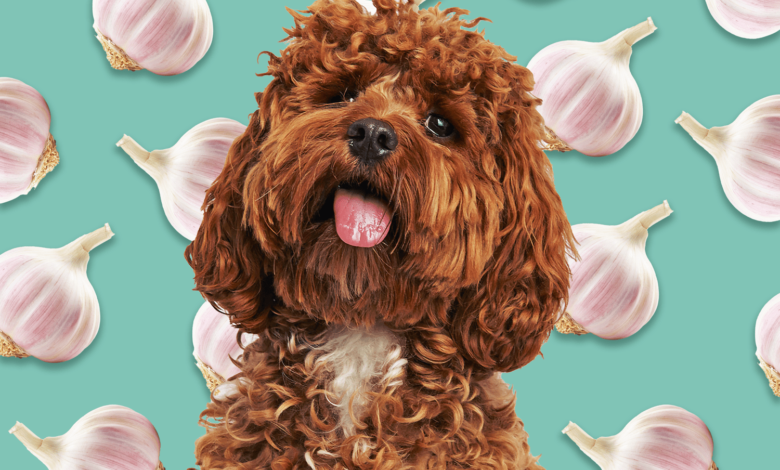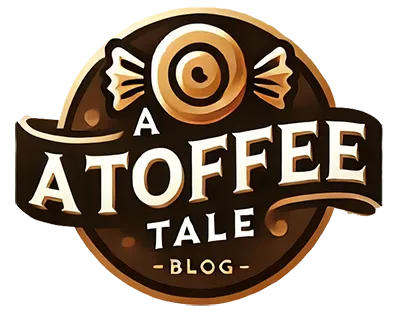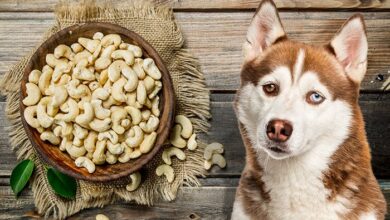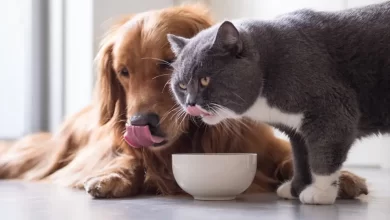Can Dogs Eat Garlic? Effects and Recommendations at 2024

Can Dogs Eat Garlic? Garlic can have serious effects on dogs due to its toxic compounds. It contains thiosulfates, which are harmful and can lead to oxidative damage in red blood cells, potentially causing anemia.
If your dog ingests garlic, watch out for acute reactions like vomiting, diarrhea, and abdominal pain. Understanding these risks helps ensure your pet stays healthy and safe.Let’s explore how can dogs eat garlic.
Identifying Garlic Toxicity in Dogs

Can Dogs Eat Garlic? Garlic toxicity is a serious concern for dog owners, and recognizing the symptoms early can make all the difference in ensuring your pet’s health. Garlic contains compounds that are harmful to dogs, and even small amounts can lead to significant health issues. Knowing the signs of garlic toxicity can help you take swift action if your dog is affected.
Early Symptoms: Initial Signs of Garlic Toxicity
- Nausea: One of the first signs that your dog may have ingested garlic is nausea. Your dog might try to eat grass, lick their lips excessively, or appear generally uncomfortable.
- Drooling: Increased drooling can be an indicator of garlic toxicity. This symptom often accompanies nausea and may be one of the first things you notice.
- Lethargy: Garlic can make your dog feel unwell, leading to a noticeable drop in energy levels. If your dog seems unusually tired or uninterested in activities, it could be an early sign of toxicity.
Progressive Symptoms: Worsening Signs to Watch For
- Weakness: As garlic toxicity progresses, your dog may become weak and unsteady on their feet. This is often due to the harmful effects garlic has on red blood cells, reducing their ability to carry oxygen.
- Pale Gums: Check your dog’s gums for color. If they appear pale or whitish instead of the usual healthy pink, it may indicate anemia caused by garlic toxicity.
- Labored Breathing: Difficulty breathing or rapid breathing can be a sign that your dog’s condition is worsening. This symptom, along with weakness and pale gums, requires immediate attention.
Emergency Symptoms: When to Seek Immediate Veterinary Care
- Severe Reactions: If your dog exhibits severe symptoms such as collapse, inability to stand, or signs of shock, it’s a medical emergency. These severe reactions indicate that garlic toxicity has progressed to a critical stage.
- Persistent Vomiting or Diarrhea: Ongoing vomiting or diarrhea can lead to rapid dehydration, compounding the effects of garlic toxicity. These symptoms should be addressed by a vet as soon as possible.
- Extreme Lethargy: If your dog is extremely lethargic, unresponsive, or showing signs of significant distress, seek veterinary care immediately. These are clear indicators that your dog’s health is in serious danger.
Being able to identify the symptoms of garlic toxicity early on can significantly improve your dog’s chances of recovery. If you notice any of these symptoms, especially the progressive or emergency signs, contact your veterinarian immediately to get the necessary treatment and care.
Safe and Unsafe Garlic Consumption Levels-Can Dogs Eat Garlic
Can Dogs Eat Garlic? When it comes to garlic consumption, no amount is considered safe for dogs. While garlic is a staple in many human diets, it poses significant risks to our canine companions. Understanding the dangers of garlic and recognizing that there is no safe level of consumption is crucial for every dog owner.
No Safe Amount: Even Small Quantities Are Dangerous
- Toxic Compounds: Garlic contains thiosulfates, which are toxic to dogs. Unlike humans, dogs do not have the enzymes necessary to break down these compounds, making even small amounts potentially harmful.
- Cumulative Effect: Regular or repeated consumption of garlic, even in tiny amounts, can lead to a buildup of toxins in a dog’s system, increasing the risk of serious health issues over time.
Variability Factors: How Size, Breed, and Health Affect Toxicity
- Dog’s Size: Smaller dogs are generally at a higher risk when it comes to garlic toxicity because it takes less garlic to reach a toxic level in their system. A small amount that might not affect a large dog can be dangerous for a smaller one.
- Breed Sensitivity: Some breeds may be more sensitive to garlic’s toxic effects than others. For example, breeds with genetic predispositions to anemia or other blood disorders may be particularly vulnerable.
- Health Condition: A dog’s overall health also plays a role in how they react to garlic. Dogs with pre-existing conditions, especially those affecting the liver or kidneys, may have a reduced ability to process and eliminate toxins, increasing their risk.
Lack of Safe Threshold: No Established Safe Quantity
- Unpredictable Reaction: There is no universally agreed-upon safe amount of garlic for dogs. Each dog may react differently to garlic, making it impossible to determine a safe threshold for consumption.
- Veterinary Consensus: Most veterinarians advise against feeding garlic to dogs in any amount due to the unpredictable nature of its toxicity. The safest approach is to avoid garlic entirely in your dog’s diet.
When it comes that can dogs eat garlic or not ,there is no safe level of consumption. Factors like size, breed, and health can influence how a dog reacts to garlic, but the risks outweigh any potential benefits. For your dog’s health and safety, it’s best to eliminate garlic from their diet altogether.
Immediate Steps if Garlic is Ingested
Can Dogs Eat Garlic? If your dog accidentally ingests garlic, taking immediate action is crucial to minimize the potential health risks. Garlic contains compounds that are toxic to dogs, and even a small amount can lead to serious health issues. Knowing what to do right away can make a significant difference in your dog’s outcome.
Contacting a Vet: Seek Veterinary Advice Immediately
- Urgency: As soon as you realize your dog has eaten garlic, contact your veterinarian without delay. The sooner you seek professional help, the better the chances of preventing serious complications.
- Emergency Services: If your regular vet is unavailable, consider contacting an emergency veterinary clinic. They can provide guidance and immediate care if needed.
Providing Information: Details Matter
- Quantity and Type: Be prepared to tell the vet how much garlic your dog consumed and in what form (raw, cooked, or in a processed food). This information will help the vet assess the severity of the situation.
- Time of Ingestion: Let the vet know when the garlic was ingested. The timing can affect the treatment approach, as certain interventions are more effective within a specific window after ingestion.
Possible Treatments: What to Expect
- Inducing Vomiting: If the garlic was eaten recently, the vet may recommend inducing vomiting to remove the garlic from your dog’s stomach before it can be fully absorbed.
- Activated Charcoal: The vet might administer activated charcoal, which can help absorb toxins in the gastrointestinal tract and prevent them from entering the bloodstream.
- Supportive Care: Depending on the severity of the situation, your dog may require additional treatments, such as intravenous fluids, oxygen therapy, or medications to protect the red blood cells from oxidative damage.
Taking these steps immediately after garlic ingestion can help mitigate the harmful effects and ensure your dog receives the best possible care. Always err on the side of caution and seek veterinary assistance whenever you think can dogs eat garlic or not.
Preventing Garlic Exposure
Can Dogs Eat Garlic? Preventing garlic exposure is essential to keeping your dog safe and healthy. Garlic can be toxic to dogs, and even small amounts can cause serious health problems. By following some basic preventive measures, you can minimize the risk of accidental ingestion and ensure that your dog stays out of harm’s way.
Food Safety: Avoid Feeding Dogs Human Food with Garlic
- Check Ingredients: Many human foods contain garlic, either as a seasoning or as an ingredient in sauces, marinades, and other dishes. Always check ingredient lists before sharing any food with your dog.
- No Table Scraps: Refrain from feeding your dog table scraps, as they might contain hidden garlic. It’s best to stick to dog-specific treats and foods that are formulated for their dietary needs.
Storage Tips: Keep Garlic and Garlic-Based Products Out of Reach
- Secure Storage: Store garlic, garlic powder, and foods containing garlic in cabinets or areas that your dog cannot access. This includes countertops, where curious dogs might be able to reach.
- Safe Disposal: Dispose of garlic scraps, peels, and leftovers securely. Use a trash can with a tight-fitting lid to prevent your dog from rummaging through the garbage and finding garlic.
Education: Ensure All Family Members Know the Risks
- Spread Awareness: Make sure everyone in your household understands that garlic is toxic to dogs. This includes not only adults but also children, who might accidentally share food with the family pet.
- Clear Communication: If you have guests or caregivers for your dog, inform them about the dangers of garlic and instruct them not to feed your dog any human food that could contain it.
By following these preventive steps, you can significantly reduce the risk of garlic exposure and protect your dog from potential health issues. Prevention is the best strategy when it comes to ensuring your dog’s safety.
Alternative Safe Ingredients and Dietary Recommendations
Can Dogs Eat Garlic? When it comes to flavoring your dog’s food or offering them treats, it’s important to choose ingredients that are both safe and beneficial for their health. Garlic should be avoided entirely due to its toxicity, but there are many healthy and dog-friendly alternatives you can use to enhance their diet.
Healthy Substitutes: Safe Herbs for Flavor
- Parsley: This herb is not only safe for dogs but also helps freshen their breath. Parsley contains vitamins and antioxidants that can be beneficial for your dog’s health.
- Mint: A small amount of mint can add a refreshing flavor to your dog’s food and can also aid in digestion. Be cautious with quantities, as too much mint can cause digestive upset.
- Dill: Another safe herb, dill can add a pleasant flavor to your dog’s meals and supports digestive health.
Nutritious Additions: Safe Vegetables for Dogs
- Carrots: Rich in vitamins and fiber, carrots are a great, crunchy treat that dogs love. They can help with dental health and provide a low-calorie snack.
- Green Beans: Green beans are a healthy and low-calorie option that can be served cooked or raw. They are high in fiber and vitamins, making them a nutritious addition to your dog’s diet.
- Sweet Potatoes: Cooked sweet potatoes are a good source of vitamins and fiber. They can be mashed or served in small pieces as a tasty and healthy treat.
Consult Your Vet: Personalized Dietary Recommendations
- Dietary Supplements: For additional support, consult your vet about safe dietary supplements that can meet your dog’s nutritional needs. They can recommend products that are specifically formulated for canine health.
- Treats and Chews: Choose dog treats that are free from harmful ingredients and made with high-quality, nutritious components. Your vet can help guide you to reputable brands and products.
- Balanced Diet: Ensure that your dog’s regular diet is balanced and complete. Your vet can provide advice on maintaining a diet that supports overall health and well-being.
Opting for safe and healthy alternatives to garlic not only protects your dog from potential toxicity but also supports their overall health. By incorporating these dog-friendly herbs and vegetables and consulting with your vet, you can provide your pet with a balanced and enjoyable diet.




